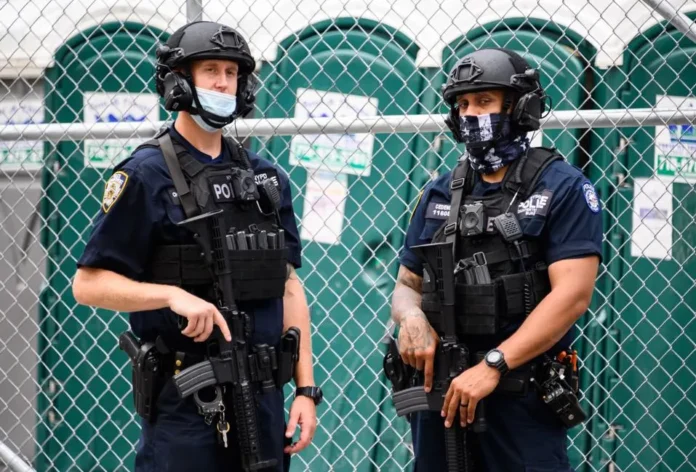Introduction to NYPD
The New York City Police Department (NYPD) stands as one of the most prominent law enforcement agencies globally, entrusted with the responsibility of maintaining law and order in one of the world’s largest cities. Established in 1845, the NYPD has evolved into a multifaceted organization, addressing various challenges and serving diverse communities.
History of NYPD
Early beginnings
The roots of the NYPD trace back to the mid-19th century when New York City experienced rapid urbanization and rising crime rates. In 1845, the department was officially formed, initially consisting of a small force tasked with patrolling the city streets.
Growth and development
Over the decades, the NYPD expanded its operations and adopted modern policing techniques. The department witnessed significant milestones, including the establishment of specialized units and the introduction of innovative strategies to combat crime.
Structure of NYPD
Organizational hierarchy
The NYPD operates under a hierarchical structure, with various ranks ranging from patrol officers to the police commissioner. This hierarchy ensures effective communication and coordination within the department.
Departments and units
The department comprises several specialized units, such as the Detective Bureau, Counterterrorism Bureau, and Special Operations Division. Each unit plays a crucial role in fulfilling the NYPD’s diverse responsibilities.
Roles and Responsibilities
Law enforcement
Primary among the NYPD’s duties is the enforcement of laws and regulations within New York City. Officers patrol neighborhoods, respond to emergencies, and investigate criminal activities to maintain public safety.
Community outreach
Beyond law enforcement, the NYPD engages in community outreach efforts to foster positive relationships with residents. Community policing initiatives aim to build trust and collaboration between officers and the communities they serve.
Training and Recruitment
Requirements
Prospective NYPD officers undergo rigorous screening and training processes to ensure they possess the necessary skills and qualifications for the job. This includes background checks, physical fitness assessments, and psychological evaluations.
Academy training
Once recruited, officers attend the NYPD Police Academy, where they receive comprehensive training in various areas, including criminal law, firearm use, and conflict resolution. The academy equips recruits with the knowledge and skills needed to perform their duties effectively.
Technology and Innovation
Tools and equipment
The NYPD embraces technological advancements to enhance its capabilities in crime detection and prevention. Officers utilize state-of-the-art equipment, such as body cameras, surveillance systems, and forensic technology, to gather evidence and solve cases.
Digital advancements
In recent years, the NYPD has leveraged digital platforms and data analytics to improve operational efficiency. Predictive policing algorithms help identify crime hotspots, allowing officers to deploy resources more effectively and proactively address emerging threats.
Challenges Faced
Crime rates
Despite its efforts, the NYPD continues to face challenges associated with crime, particularly in certain neighborhoods with higher rates of violence and criminal activity. Addressing these issues requires a multi-faceted approach involving both law enforcement and community intervention.
Public perception
The NYPD’s relationship with the public is influenced by factors such as media coverage, historical incidents, and perceptions of police conduct. Building trust and improving community relations remain ongoing priorities for the department.
Community Engagement
Programs and initiatives
The NYPD actively engages with communities through various programs and initiatives aimed at addressing specific needs and concerns. These include youth outreach programs, neighborhood watch groups, and partnerships with local businesses and organizations.
Partnerships with local organizations
Collaboration with community-based organizations and advocacy groups strengthens the NYPD’s efforts to address social issues and promote community resilience. By working together, stakeholders can develop holistic solutions to complex problems.
Achievements and Recognition
Notable cases solved
Throughout its history, the NYPD has achieved numerous successes in solving high-profile cases and apprehending dangerous criminals. These accomplishments demonstrate the department’s dedication to justice and public safety.
Awards and honors
The NYPD’s exemplary service has been recognized through various awards and honors, both nationally and internationally. These accolades reflect the dedication and professionalism of its officers and staff.
Future Outlook
Modernization efforts
Looking ahead, the NYPD remains committed to embracing innovation and modernizing its operations to meet evolving challenges. Investments in technology, training, and community partnerships will continue to drive progress and improve outcomes.
Goals and objectives
The NYPD’s future priorities include reducing crime rates, enhancing community trust, and fostering greater transparency and accountability. By aligning its efforts with these goals, the department aims to create safer and more resilient communities for all New Yorkers.
Conclusion
In conclusion, the NYPD plays a vital role in safeguarding the residents of New York City and upholding the rule of law. Through its dedication to professionalism, innovation, and community engagement, the department continues to adapt and evolve in response to changing needs and challenges.



